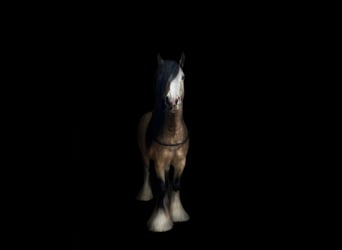US
Horse searches for a rider
Warm blood horse breeds were created by selective breeding of hot blood horses with cold blood horses. Hot blood is a term that has traditionally been used to describe certain breeds and types of horse such as Arabians, Turkomans, Barbs and Thoroughbreds. Their temperaments were believed to be hotter and more active than those of cold bloods. Cold blood was a term applied to draught horses, some ponies and cobs, particularly those of northern European origin. Warm blood horses, the outcome of the genes of horses of diverse origins - both hot and cold bloods - are today some of the finest competition horses in the world.
DE
DE
US
Similar search queries
AT
US
US
DE
DE
DE
US
Features and character of warm bloods
The terms warm blood, hot blood and cold blood do not reflect real differences in temperature between the different breeds! However, it was once believed that horses, like people, could be defined by the different mix of humours (hot, cold, wet and dry, for instance) that made up their natures. Arabians, Turkomans, Barbs and Syrians, because they came from hotter areas of the world, and because they appeared to be fierier than some other breeds were designated “hot blooded”. The larger horses of northern Europe such as the Flanders or Flemish horse, were cold bloods because they came from colder climates, were slower and did not appear to have the same fieriness. However, they had great strength and size compared to the smaller, lighter hot bloods.
While the concept of hot, cold and warm bloods, which links back to medieval thought, doesn’t have scientific validation, it is true that different types of horse have different qualities. Some are agile and active, others are fast, others are tall and strong, and some are excellent at jumping. Through selective breeding, the warm blood breeds combine these different qualities to make successful sports horses for different equestrian disciplines.
Most modern warm bloods are a European creation. They are often described as middle weight horses to distinguish them from light riding horses, such as the Arab, and heavy draught horses such as the Clydesdale or Belgian. They are usually tall horses, between 15.3 hands high (63 inches/160 cm) and 17 hands high (68 inches/173 cm) and are ideally suited for modern competitive equestrian sport. There are pony warm bloods too. Different types of warm blood have emerged. Some are more suitable for dressage, others for show jumping or cross country, while others are good all-rounders.
Warm blood stud books are usually open to some degree, rather than closed, which means the breeds have the opportunity to develop by registering horses of suitable type and quality. Because the studbooks are open, there is some discussion as to whether warm bloods are true breeds or not. Nonetheless, they still have individual studbooks, frequently regionally based, using some of the most historic breed names. Most warm blood registries are members of the World Breeding Federation for Sport Horses.
Because the primary role of the modern warm blood is to be a successful sports horse, conformation standards are strict, and testing of breeding stock is rigorous. The horses should not only be fit, healthy and athletic, they should also exhibit the type of temperament that is required for demanding competitions. Many of their direct ancestors were the cavalry horses and hunters of the early twentieth century, from which modern warm blood breeds were mainly developed in the latter half of the twentieth century. During this period, equestrian sports became not only an enjoyable activity for all kinds of riders, but also popular spectator sports with an enthusiastic following. Although mostly bred for dressage or jumping events, some warm bloods make excellent harness horses too, and take part in sports driving. Some of these breeds have traditional carriage and coach horse ancestry.
Warm bloods - These breeds belong to them
Continental Europe is the home of the modern warm blood sports horse. Many are German breeds such as the Oldenburg, Württemberger, Mecklenburger, and Bavarian Warmblood. The Trakehner is also a famous warm blood which is considered to be a distinct breed. The Hanoverian and Holsteiner are derived from old stock and their stud books are less open. Dutch warm bloods, such as KWPN and NRPS registered horses, have been phenomenally successful in recent years, particularly in show jumping. France’s Selle Français is a well-established warm blood. The Scandinavian countries each produce their own warm bloods, which are successful in both dressage and show jumping. The Irish Warmblood, though only established in 2009, draws on decades of success through Irish Sports Horse breeding. British Warmblood registered horses include any appropriate warm blood breeds as long as they are bred in Britain. The studbook was established in 1977.






